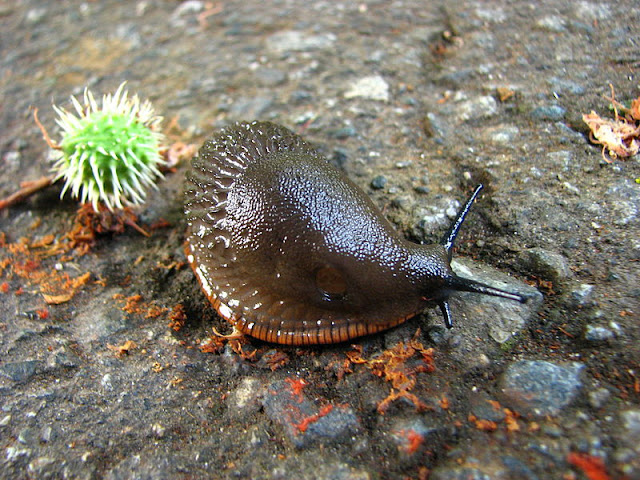 |
| What are the safe organic alternatives to slug pellets |
With still no apparent shortage of slugs and snails in our landscape after almost 60 years of metaldehyde application, we should be asking ourselves this. Is there any actual long term benefit and is there a better way?
So as responsible gardeners what can we do to make our gardens safer for native wildlife? One effective alternative is to treat your ‘at risk’ plants with products containing the ingredient Iron phosphate. It is far less harmful in the environment and will not poison the predators that eat infected slugs and snails. However my favourite, tried and tested method is to use Slug pubs. Use beer or larger (as cheap as you like) the smellier the better and place the pubs 3-4 metres apart. Replace the booze every 2-3 weeks depending on how many you catch. The more you catch the ore often you will need to replenish the pub. That being said try out these other ideas -
1. You could also consider using slug specific natural predators. Specialised nematodes (tiny soil borne worms) are available at most good garden centres or online that can actively seek out slugs present in the garden. Once infected, the slugs will stop their destructive feeding within three days, and just one dose will provide effective control which can be maintained for up to 6 weeks.
2. The organic gardener can consider developing an environment that positively encourages their native predators. These would include the usual suspects of blackbirds, thrushes, hedgehogs, frogs and toads. Planting colourful native plants or preferably building a wildlife pond will not only create a suitable habitat for breeding hard working amphibians, it will also increase the number and range of valuable insects which in turn provides valuable food to encourage blackbirds and thrushes.
3. Place copper rings around young plants to prevent an early attack. As the slugs slime make contact with the copper metal a small electrical current is induced. It's a similar experience to those of us who have fillings and accidentally put a piece of metal foil in your mouth. It is an uncomfortable feeling and enough to make the slugs back off.
4. Place Rosa rugosa stems at the base of your target plants to act as an effective barrier. If you are familiar with the dense, needle sharp thorns of this plant then you will understand why this would work. You just need to secure it in place otherwise it will become dismantled by birds, dogs, or clumsy children.
5. Try spraying your weeds with weak beer as this will help to draw the slugs and snails away from your favourite specimens. Although this is often just a temporary solution, it's ideal for creating sacrificial plants from almost any annual or perennial weed.
6. Use improvised cloches such as plastic drink containers to act as a physical barrier. One trick that works well is to smear a ring of grease around the outside as this will stop the slugs and snails climbing over.
7. Use sacrificial plantings such as lettuce or marigolds to entice the slugs away from your more valuable plants.
For related articles click onto the following links:
ARE SLUG PELLETS POISONING OUR NATIVE WILDLIFE
HOW TO MAKE A NATURAL AND ORGANIC INSECTICIDE SPRAY FOR APHIDS
ORGANIC CONTROL OF CATERPILLARS
Sacrificial Planting
SLUG RESISTANT BEDDING PLANTS
WHAT ARE THE SAFE ORGANIC ALTERNATIVES TO SLUG PELLETS
WHICH NATIVE ANIMALS EAT SLUGS AND SNAILS







No comments:
Post a Comment